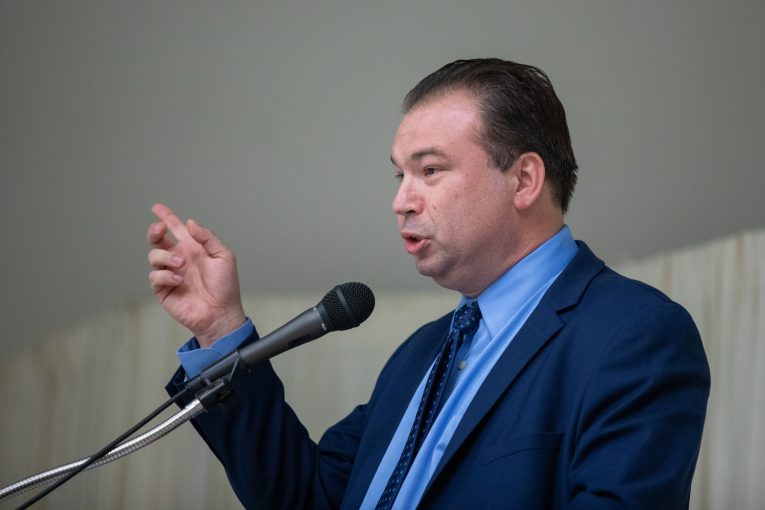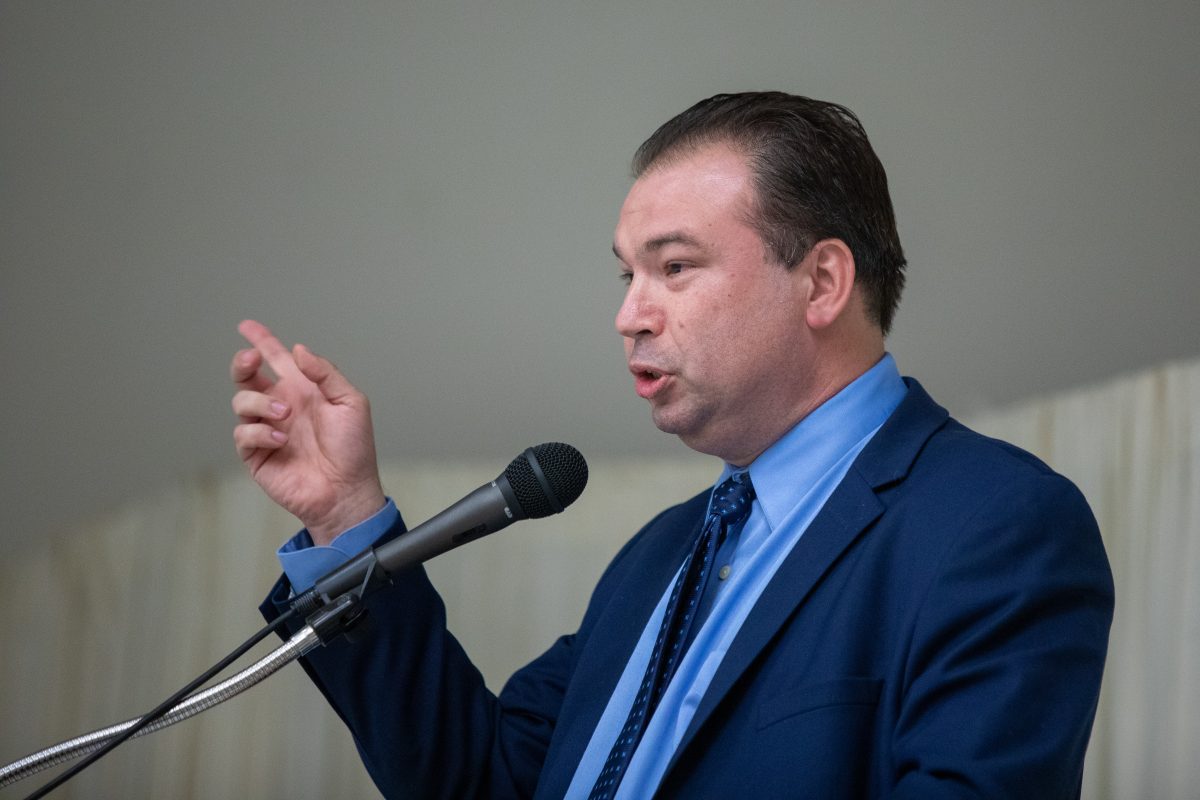

By Jeffrey Deskovic
“Looking back” will feature reprints of articles that Jeff previously wrote while a columnist at The Westchester Guardian, which encompass topics that are applicable here in CA as well as across the country and not simply applicable to NY.
Freddie Peacock was proven innocent by DNA on Feb. 4, 2010, in Rochester, New York. The exoneration makes him the 25th person cleared by DNA in New York State. He was wrongfully convicted in 1976 of rape, based upon a false confession and a misidentification.
According to The Innocence Project, “A woman was raped in July 1976 near her Rochester apartment. She was accosted in the apartment building’s parking lot just after 2am and knocked to the ground, hitting her head on the concrete. She didn’t see her attacker before hitting her head. She was dragged to the side of a nearby house and raped. When the perpetrator fled, she went to the apartment building and asked the building  superintendent to call the police.
superintendent to call the police.
“Peacock lived in the same apartment building as the victim, and she made a shaky identification of him as the perpetrator. Barely two hours after the attack, Peacock was arrested and interrogated for about two and a half hours. He initially denied any involvement in the crime, but police claim that he ultimately confessed. Peacock told the detective handling the interrogation he had severe mental illness and had been hospitalized for it several times. In his alleged confession, Peacock could not tell officers where, when or how the victim was raped. He was tried and convicted.”
Even though he had left prison, Peacock never stopped trying to clear his name. Not while he was on parole for the next 10 years, nor when he was removed from it in 1992. In fact, misunderstanding the legal system, he actually unsuccessfully sought not to be removed from parole, believing that if he did not remain under supervision it would hurt his legal efforts. He maintained his persistence even when his sister wanted him to let it go, due to her worrying that it was eating him up. Peacock would constantly talk about it to anybody that would listen, ranging from friends and family, skeptics, and to people that believed in him.
His persistence paid off: Twenty-eight years after leaving prison, DNA testing has proven that Freddie Peacock was innocent. Innocence Project Co-founder Peter Neufeld, praising his persistence, said, “Nobody in the U.S. who was exonerated with DNA testing has spent this many years outside of prison fighting to prove his innocence.”
New Innocence Project Report
This past year has been referred to by The Innocence Conference Network, which is a collective umbrella organization made up of all the organizations that work to clear wrongfully-convicted prisoners and bring about legislative changes, as a “Banner Year”, because 27 people were cleared by organizations in their membership.
This number does not include some of the people who were cleared on a non-DNA basis, such as Fernando Bermudez and Dewey Bozella whose cases appeared in previous Guardian articles, nor people who were cleared by private attorneys not affiliated with The Innocence Conference Network. However, it does give us a glimpse into the number of people who may be wrongfully convicted but who have not yet been exonerated.
In addition, it underscores the need for more organizations that will work to clear people on a non-DNA basis. Briefly, some of the methods for clearing people other than by DNA evidence include: investigating alternative suspects; finding new evidence of innocence or of an alternative suspect’s guilt; discovering exculpatory evidence that has been withheld; discovery of fraudulent expert testimony, in that the expert may have fabricated, lied, or exaggerated in their testimony and/or documentation, or that the “science” they have testified to is, in fact, junk science; eyewitness identification recantations or incentivized witnesses who admit that they lied or that they did, in fact, receive a benefit though they denied having received one.
Freddie Peacock’s recent exoneration marked the 250th person, nationwide, who has been exonerated by DNA. In order to maximize the learning moment that his exoneration presents, The Innocence Project released a new report entitled 250 Exonerated: Too Many Wrongfully Convicted. The report is similar to their previous report, 200 Exonerated: Too Many Wrongfully Convicted, but differs from it in that the 50 new cases are also included, and that the statistics normally cited have been updated to reflect the new cases. I encourage everybody to read the report, as it is very informative.
Within its text there are a couple of passages that stick out, pertaining to the reality of what a wrongful conviction is really about, from a visceral level, and the need for legislative reforms. New York State Legislators, and legislators across the country take note: No changes have as yet been enacted in New York, and other states have as yet to enact a full body of reforms necessary to make their systems as accurate as possible thereby reducing the chance of future wrongful convictions.
The report declares:
“Without warning or cause, they were swept off the streets one day, forcibly separated from their families and friends, and wrongfully imprisoned for years, or, often decades. Some narrowly escaped execution.
“Each wrongful conviction that has been overturned through DNA evidence could have been prevented if eyewitness procedures had been better, if interrogations had been recorded, if crime labs had been subjected to greater oversight, if the system had been more skeptical of jailhouse informants, or if other reforms had been in place.”
Here are some shocking statistics that are included in the pages of the booklet:
- 6% were under 18 when they were wrongfully convicted;
- 21% were 21 years old or younger when they were wrongfully convicted;
- 60% were African American, 8% were Latino, and 29% were Caucasian;
- 47% had spent at least one third of the lives wrongfully imprisoned or on parole at the time of their exoneration;
- 17 of them had spent time on death row;
- They were convicted in 33 states and the District of Columbia;
- 67% were convicted after 2000. This puts to bed the idea that somebody is unlikely to be wrongfully convicted in these times due to DNA; it can still happen;
- Many were denied parole, because, in part, they refused to “take responsibility” for crimes they did not commit;
- 76% were convicted based upon misidentification. Of those misidentifications, 53% were misidentified by people of a different race, and 38% had been misidentified by more than one person;
- 5 were wrongfully convicted based upon improper use of DNA;
- 19 of them had pled guilty to crimes they were later proven innocent of;
- 52% were convicted at least in part by improper or unvalidated forensic science;
- 53% of those who falsely confessed were 17 years old or younger, or they had a developmental disability and/or a mental illness.
“Jeffrey Deskovic, Esq, MA, is an internationally recognized wrongful conviction expert and founder of The Jeffrey Deskovic Foundation for Justice, which has freed 9 wrongfully convicted people and helped pass 3 laws aimed at preventing wrongful conviction. Jeff is an advisory board member of It Could Happen To You, which has chapters in CA, NY, and PA. He serves on the Global Advisory Council for Restorative Justice International, and is a sometimes co-host and co-producer of the show, “360 Degrees of Success.” Jeff was exonerated after 16 years in prison-from age 17-32- before DNA exonerated him and identified the actual perpetrator. A short documentary about his life is entitled “Conviction“, and episode 1 of his story in Virtual Reality is called, “Once Upon A Time In Peekskill“. Jeff has a Masters Degree from the John Jay College of Criminal Justice, with his thesis written on wrongful conviction causes and reforms needed to address them, and a law degree from the Elisabeth Haub School of Law at Pace University. Jeff is now a practicing attorney.





